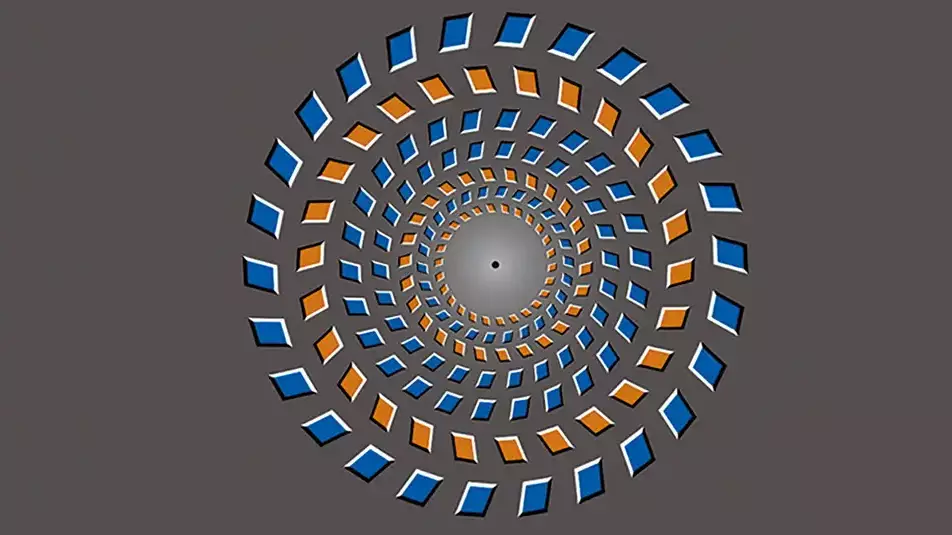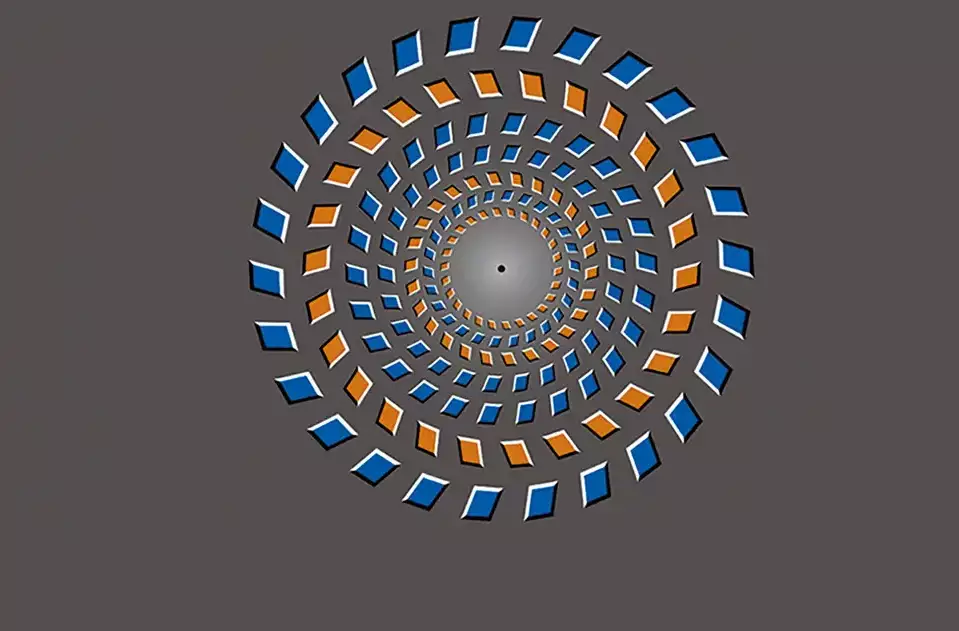
You may have been left scratching your head over this particular optical illusion, which appears to spin either clockwise or anti-clockwise depending on whether you move it towards or away from your face, but now it's been discovered that it actually 'breaks your brain'... for 15 milliseconds.
The Pinna Brelstaff illusion crops up on social media every now and again, but now experts from the Chinese Academy of Scientists have conducted a study into how we perceive it and what our brains do while we're looking at it.
Advert
Researchers used two macaques in their study, chosen as they have a similar visual processing system to us humans, and hooked them up to electrodes to gain an insight as to what was going on in the animals' heads.
The macaques were trained to indicate if they saw any rotation in images that were actually moving and were then showed the Pinna-Brelstaff images - it was found that they also perceived these images to be moving.
Researchers found a 15-millisecond gap in the processing between neurons that perceive global motion, in this case the lines within the illusion moving, and those that perceive local motion - the fact that there was actually no movement.

Although this may seem like a flaw, experts say it actually helps the brain to act more efficiently - so in effect our brains are making a shortcut.
Advert
Dr. Ian Max Andolina at the Institute of Neuroscience, Chinese Academy of Sciences, China, told Newsweek: "Navigating through the world requires our brains to be able to compute the direction in which we are heading; this is critical for day-to-day life.
"To do this, motion information has to be combined from every point in the space around us and processed efficiently.
"But how this occurs is not very well understood.
"Our study utilised a celebrated illusion to study how this information is combined by the brain. The Pinna illusion carefully introduces local biases, and unlike other illusions these can be well controlled."
Advert
Paul Azzopardi from the University of Oxford told New Scientist: "As you move your head in and out, the way these elements slide across your retina is going to have two motion directions: an outward expansion, but also the rotation induced by the fact that the edge is slanted.
"That's different from something that just rotates or just expands, so you might expect that it takes a little more work to resolve what the motion is telling you."
Featured Image Credit: Junxiang LuoTopics: Interesting, Weird